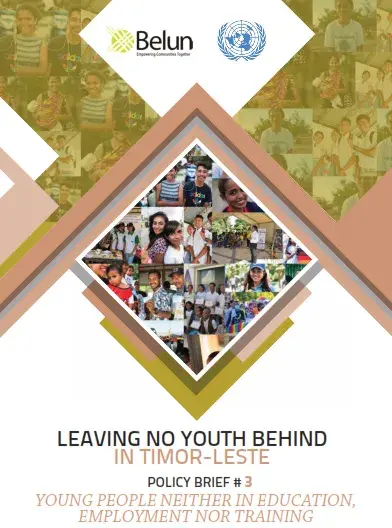Background
This policy brief looks at the vulnerabilities of youth who are not currently engaged in employment,
education, nor in training (NEET). These may be youth who have completed school but
have
not found work; youth who have left school early; or even youth who have never attended
school. They might be unemployed and looking for jobs or be disillusioned and not be
looking
for any work at all. They might be inactive (i.e. not involved in the workforce) but not
studying
either.
NEET youth are often the most left behind and excluded from society, and were identified as a
group of great concern within the National Youth Policy . Because they are a highly vulnerable
group, Goal 8 of the SDGs specifically targets NEET youth: “by 2020 substantially reduce the
proportion of youth not in employment, education, or training (NEET)”.
In Timor-Leste, more youth are attending school, and staying in school longer, than in the
past. As a result, 56% of young people between the ages of 15 and 24 are currently in school,
according to the 2015 Census. Additionally, some young people are already working. But
Timor-Leste has very low employment rates, with only 31% of the working age population
engaged in work and only 21% of 15 to 24 year-olds currently working. Every year, around
18,000 youth enter the workforce and many are unable to find work. So what are those
neither in education or employment doing?
This report integrates an analysis of 2015 Census and 2010 Census data with responses from
three focus group discussions (FDGs) held in Dili and Liquica as well as evidence from background
literature.


